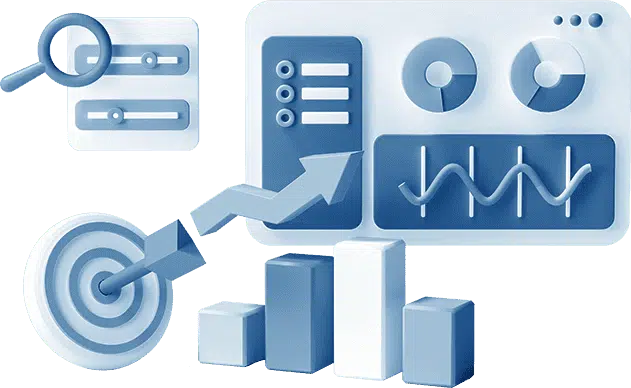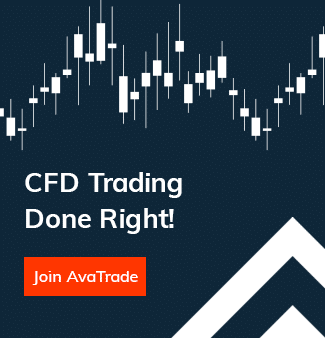Trading styles

- Online Trading Styles Explained
- Understand your trading style
- Short and Medium Term Trading
- Long Term
- Why trade with Friedberg Direct
Online Trading Styles Explained
Like every other trader, whether you are a novice trader or talented expert in the field of trading forex, you come with your own unique trading style. No two traders are alike. Even if they follow the same rules and information, each person’s trading results will most likely be different from the other.
Understand your trading style
Trading is an active participation in the financial markets, where individuals seek to gain additional capital on the movements of the various financial assets.
There are many ways traders can enter and take part; however, each trader does have his own way of achieving his goals on this global stage. Understanding your trading mindset and trading style is an essential part of your success.
Here we will take a more in-depth look at the most common Forex and CFD trading styles traders adopt. There are no particular rules that confine any trader to any of the below: find what suits you best and enjoy your trading experience.
Short and Medium Term Trading
Short-term, like medium-term trading refers to trading on the stocks and futures markets where the duration between entry to the market and the exit (closing of a position) are done within a short amount of time, lasting anything from a few minutes to several days.
Short/medium-term trading can be extremely lucrative but, by the same token, very risky as the markets are unpredictable and vary in nature, due to the many influences that affect the stock markets at any given time.
Understanding the risks and rewards of each trade will assist you in the success of your strategy and allow you to add reinforcements as a buffer to protect against unforeseen market events that creep up.
Spotting a successful short/medium-term trade setup requires basic concepts that must be understood and mastered.
Fundamentals in short and medium-term trading:
- Recognize market potential – The difference between market opportunity vs a market that is to be avoided. Sometimes it is wiser to hold on to your capital rather than risking the loss in an overly active market.
- Keep abreast of moving averages – This is the average price of a stock over a precise time period (characteristically 15, 20, 30, 50, 100 and 200 days), where you will gain an idea of whether the stock is trending on an upward curve or spiralling downward.
- Recognize overall cycle patterns – As markets tend to act in cycles, keeping an eye on these cycles will indicate to traders when the best time to enter your trades will be.
- Market trends and patterns – These can develop over a span of a few days; and while studying these closely, you will notice certain chart patterns of upward and downward curves. Find the trend your asset is taking on and ride the wave.
- Manage your risk – Extremely important for every trader to master: “Minimize risk and Maximize returns”. Make use of entry orders and stop losses as they are available to you on the trading platform. This way you will not exceed the available capital in your trading account.
- Use technical analysis – Evaluating and studying the asset can be done by using previous prices and patterns of the asset to predict what will happen in the near future to that instrument. The Metatrader 4 platform is equipped with a range of technical analysis tools for your convenience.
Medium Term is best defined by taking the above into consideration. Most retail traders prefer to hold their trading positions over one or more days, taking advantage of technical situations.
See a trading opportunity? Open an account now!
Long Term
Long term traders keep and hold positions open for long periods of time. These time spans can stretch over months, even years, mostly on the study of fundamental factors that are affecting the markets.
For long term traders generally, a higher trading budget is required from the onset, as most investors realize that their positions need to withstand or ‘ride-out’ a number of market changes during the term that the position is open. The idea behind long term trading is to build your returns gradually over a period of time.
Ironically, the time spent on making a long-term buy and hold trade is much less than compared to short/medium-term trades. The energy spent on the latter also involves immediate reactions to market trends. Risk management strategies need to be put in place. Here are a few guidelines to keep in mind:
- Use a small amount of leverage – Stick to volumes that make up a small percent of your equity. This way you will be able to sustain an intra-day or intra-week volatility.
- Keep your SWAPS in mind – Swaps are fees that are charged by all brokers for holding positions open overnight. There are instances that you may incur positive swaps; however most of the time these are negative, so be well prepared for these expenses. Swap-free accounts are available for Muslim traders.
- Time vs profit potential – Consider the amount of time you spend on your trading and compare it to your potential returns received. Traders of long-term trades should use relatively large amounts of capital to make the time investment ratio worth their while. Common errors of long-term traders include that, with even the best trading strategy in place, you may not reach your targeted profit, and this could occur when too little leverage is used.
Breaking down the subcategories of traders and trading strategies that are most commonly used:
Scalping
A very fast-paced day-trading strategy in which positions are entered and exited within seconds and minutes. Buying and selling are done frequently and scalpers target the smallest intraday price movement to build on their profits. An additional benefit of scalping is that traders will not incur overnight interests (rollover fees), thus eliminating extra costs.
Profits are targeted and stops are used to assist traders in managing their entries and exits, as scalpers place many trades simultaneously per session.
Due to the quick nature of the scalper, there are no patterns, analysis etc; however, the use of 1 – 5 minute tick charts to make their fast calls is what they rely on.
Day Trading
As the title describes, day trading refers to buy and sell positions that are entered and exited on the same day. These types of traders make their returns by means of leveraging bigger amounts of capital to take advantage of highly liquid instruments while they make small price movements in the markets. Day Trading is another strategy where you will not incur overnight costs either, as all trades are opened and closed during the same day.
Due to the fact that day trading can be highly rewarding but highly risky, traders of this strategy need to ensure two major details in day trading, namely LIQUIDITY and VOLATILITY. The market’s liquidity allows for the entrance and exit of stocks at the optimum price. How?
They take into consideration the difference between the ask and bid price (spread) and low slippage, and look at tight spreads. Volatility is measured by the expected daily price range (which are the active hours of the day trader). The higher the volatility, the higher the profit potential as well as the loss ratio.
Making use of the following techniques can greatly assist in perfecting your day trading abilities:
- Identifying possible entry – intraday candlestick charts, ECN quotes and real-time news are great indicators for entering the markets.
- Looking for price targets – Identifying the price target is optimal when entering the markets. You need to make certain that you enter at a good price to ensure a profit when trades close.
- Stop-Loss – Margin trading does increase your risk and exposure to rapid price movements. Using your stop-loss will limit the loss on any position.
- Beating the odds – Evaluating your performance by means of closely following your strategy rather than chasing a profit.
Swing Trading
Swing trading refers to the style of trading leaning more towards fundamental trading, where positions are opened and kept open for a period of days or weeks.
The reason for the trade being more fundamental is that swing trading incorporates changes in the fundamentals over a few days, with the end result being a profit from medium-term market changes. Over-night holds are generally charged for and positions can also be held for several weeks.
Swing Traders generally are the medium between day traders and trend traders. Day traders hold stocks from seconds to hours but never longer than a day. Trend traders prefer to examine long term trends by means of studying fundamental trends which can take anything from a few weeks to months.
This is known in trading circles as the best trading style for beginner traders that are looking to venture into the financial markets. This type of trading will also offer significant profit potential to advanced or intermediate trader too.
Position Trading
For the long-term trader who likes to hold positions open ranging from months to years. Not paying attention to market fluctuations in the short-term, they invest over the long run and believe that small market changes will even out in time. Position trading is the extreme opposite of day trading as the goal is to make profits over a long period of time and on the movement of the trend – not a short-term tick.
Many traders of this strategy will look at weekly or monthly charts in order to gain a sense of where their chosen asset lies in terms of its trend. These are determined by the use of technical and fundamental analysis to evaluate price charts and market activity. There are associated fees with holding positions overnight known in the trading industry as rollover.
Why trade with Friedberg Direct
When you know the details of different trading styles, you can try each of them on one of our risk-free demo accounts to understand which one is the right one for you.
Get the best educational information to build your market knowledge as well as technical support to back it up. We offer you many free trading tools so that when you enter the market, you will do so in confidence. Join Friedberg Direct now and benefit from trading with the market’s best.
Trading Styles FAQs
- Which trading style is best?
The answer to this question is highly dependent on the person asking. Your optimal trading style is going to be determined by how long you like to hold your trades, and how much risk you’re willing to take on. Those who like fast-paced trading and quick profits might adopt a scalping style. And those who are more likely to look at the big picture might go for position trading or swing trading. Your trading style will also determine what trading opportunities come your way.
- What are the benefits of scalping and momentum trading?
Both scalping and momentum trading are styles in which positions are not held open overnight. In some cases, scalpers might only hold a position for a few minutes. Both styles rely on finding the most active stocks or other assets and taking advantage of fast-moving price volatility. A scalper or a momentum trader needs to be able to rapidly process information and trade without fear or hesitation. The biggest benefit of both styles is having no risk of overnight moves in markets since both styles are flat at the close of each trading day.
- What are the benefits of swing trading and position trading?
Trading styles in which positions are held for a longer period of time benefit from being able to take advantage of long-term trends. When you are willing to hold a position for several days it is easier to find assets which are already trending, and to simply get aboard that trend. Those who are able to combine fundamental analysis with technical analysis often do best using these styles of trading. However, there is a higher risk associated with holding positions overnight or longer as well as overnight rollover fees that may apply.
These FAQs, comments/analysis do not take into consideration your individual personal circumstances and trading objectives. Therefore, they should not be considered as a personal recommendation or investment advice. They are intended for educational purposes only. Past performance is not indicative of future results. There is no guarantee that the contents or instructions will result in profits or not result in losses.







